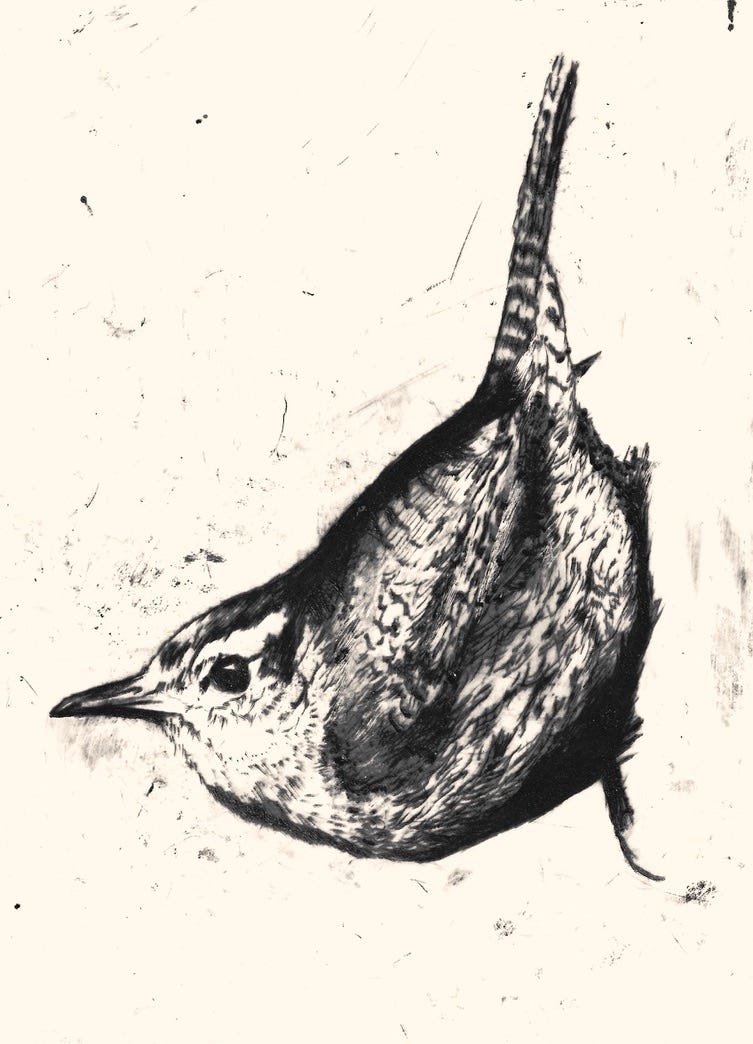Trinkets and copycats
All about the perfect imperfections and considering the difference between art and decoration.
Brushing my teeth this morning I was thinking of my husband. He’s away for five weeks, working overseas, so he’s in my thoughts. (If I’m not busy seeing to the kids and keeping things going at home, that is.)
As I glanced in the bathroom mirror, I focused on the necklace I’d chosen to wear, one he bought me a few birthdays ago. It’s simple yet delicate, made of oversized links with satisfying variation in each shape and profile.
Gift-giving
The necklace is, of course, handmade – because Rob relishes one-offs and rarities. He has particular taste. And you can tell that from his generous gift-giving.
It’s the perfect imperfections that come with handmade things that make them all that more special, isn’t it?
As you can imagine, I don’t go in for mass produced, high street trinkets. In fact, trinkets in general are usually not precious to me, but when I can see or feel the humanity in a hand-made piece it becomes much more loaded with meaning.
The seesaw
I sometimes seesaw between thinking the job of art is merely decorative - and more fun in the making than the owning. Other days I’m in awe: art is human courage made manifest. Now that’s one BIG chasm between those two opinions, isn’t it?
I’m not sure why I swing from one extreme to the other, but reflecting on it now, I think it’s because I forget to hold the maker’s intention and craft in mind. On a good day, art is an energy that you welcome into your life; it shifts things along and represents change, or a significant and dynamic instance in time, or a universal truth.
On a lesser day, art goes with the sofa; it’s more trivial, it’s just good old eye candy or makes you laugh.
I guess there’s room for both views. And I guess it depends on whether the art moves you or just pleases your whims in the moment.
Random and sensitive
Certainly art becomes meaningful to me when the imperfections are celebrated and “owned”. The fluctuations in a line or an impetuous mark. The splashes or scratches, which are about freedom and risk, showing an ability to overcome perfectionism. And brush strokes that reveal process or unexpected spots of ink from an etching plate that make each impression unique.
These “mistakes” are where the magic lies.
So what about copycat art?
With all this bubbling away I was intrigued to listen to an interview on Radio 4’s Sideways with celebrity forger, David Henty. He was gifted from childhood and began by making money from art as deception: he was able to scam watermarks. Not terribly well, however, as he landed up in prison. Oops.
Being banged up had its plus side, giving him time to really hone and progress his skills (prison does that). He took the opportunity to immerse himself by copying great masters, and discovered a real appetite for learning about their lives and historical contexts.
He is now much in demand, producing skilled copies of the world’s most prized paintings.
He doesn’t sell fakes though: they’re signed in his own name on the reverse. In other words, he has gone “straight”, loves his creative life and is well remunerated for his work (and that’s quite something).
Photo copyright, David Henty, original concept and composition for the paintings, not David Henty
Prankster
Some people think of forgers as pranksters. But in many ways, copycat artists like David are “creative kleptomaniacs” (check out Austen Kleon for this apt term; I’ve recommended him before).
Theft, some big-name creatives would argue, is the root to all art. Theft and borrowing, and the bringing together of the old with the new. David Bowie said it too - he claimed the only art he’d ever studied was stuff he could steal from.
But then you make it your own. You iterate and amalgamate and you bring a new energy. This is where you create value.
And so…
When I find myself conflicted about the value of art, of my own art, I think it’s worth remembering that the pranksters as well as the masters all count. There’s creativity in both approaches and your version is adding a certain value. Even if the intention is to make art that will “go” with that sofa.
And you might be able to reproduce a style when you’re copying, but you can never totally edit out your own added imperfections - let’s call it “your own hand”. I’m betting that in David Henty’s work, when you get up close, there are tell-tale signs that he is the maker.
Once upon a time
So is there a difference between wallpaper and art? Copycats and original concepts?
Undoubtedly yes! Fundamentally, however, differences and appreciation are created by external narratives.
Value is likely generated by the stories we tell and share about art, as well as the energy and zeitgeist manifested during the making of that art.
Ask yourself how you’re feeling when you’re creating. That’s the beginning of your story at least.
My next workshop for paid subscribers will be all about an artist who kept me going during lockdown – we will be making our own atmospheric “weather” art in response. But not copying, naturally. ;)







Such an interesting look at art and it's place in our lives! I'm with you in loving the evidence of the maker's hand in a work. That's something I aim for in my own work too.
And yet, I find myself with a strong sense of wanting to see art of all kinds in everyone's lives. As in, I'd rather see my art on dishtowels and wrapping paper to brighten as many lives as possible. I suppose that makes me less of a "fine artist" than many would like...
It's a more complex idea than it seems, thanks for sharing your thoughts!